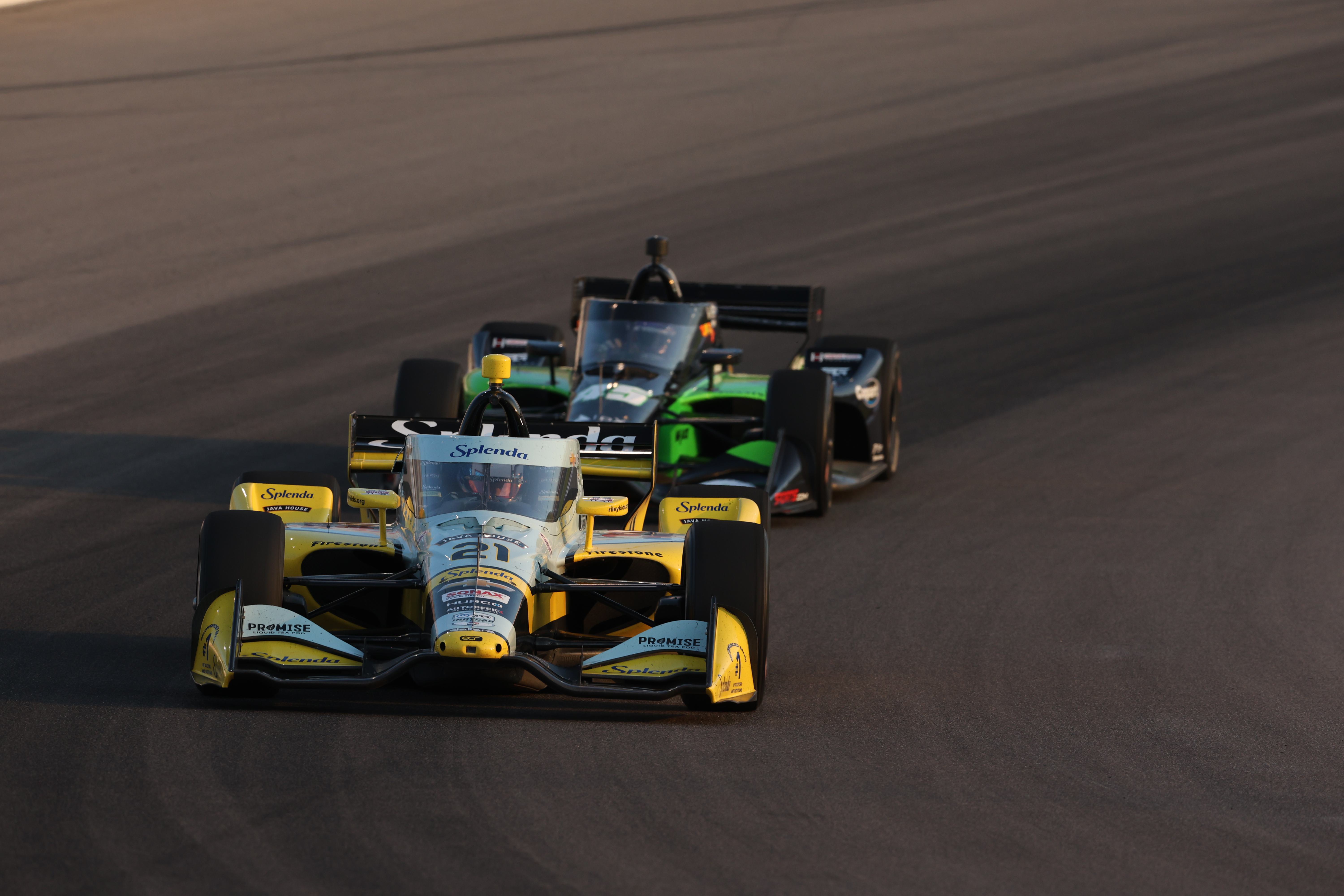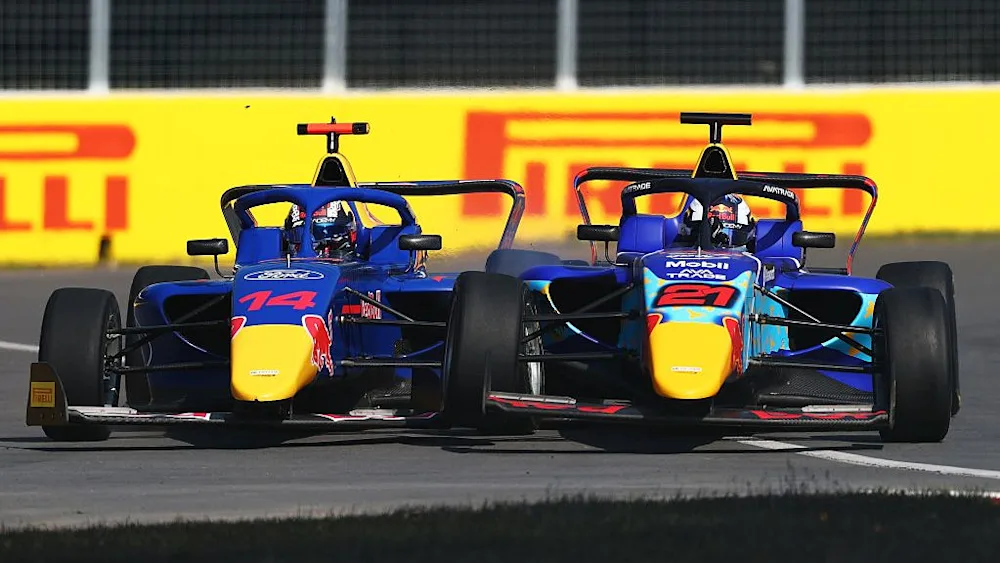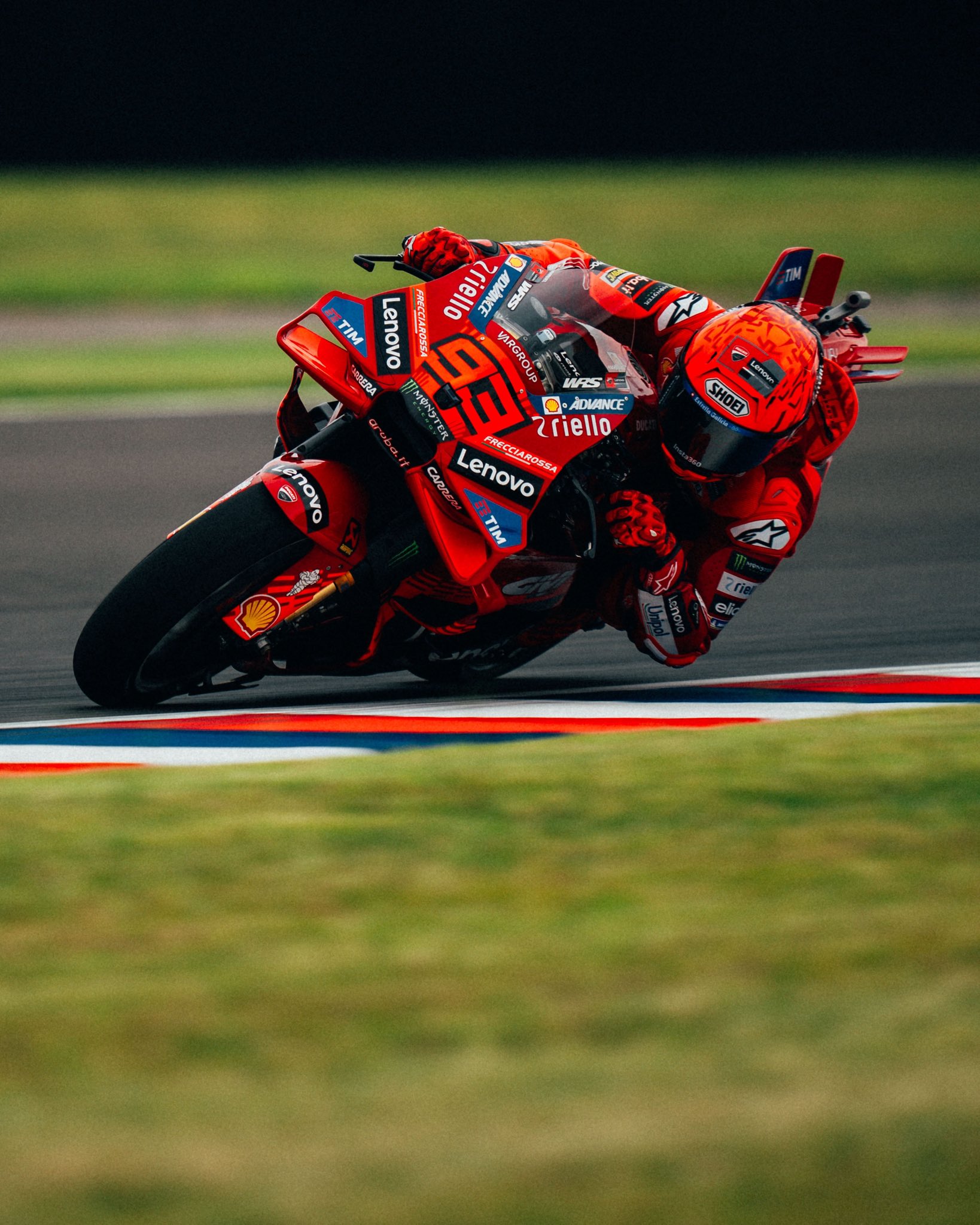Track limits, weather and tyre wear in the focus for the Silverstone F2 weekend
- Vyas Ponnuri
- Jul 5
- 8 min read
Updated: Jul 7
Written by Vyas Ponnuri
The opening day of Formula 2 action around Silverstone saw several drivers breach track limits, apart from getting caught out by the wind during the 30-minute qualifying session, as they attempted to lay down fast laps to set the grid.

The lap time deletions came thick and fast, with as many as eight drivers having their first lap times deleted, while a further three hadn’t yet set any lap times early in the qualifying session.
A majority of lap times were deleted due to violations detected in the high speed turn 9, Copse corner, with the wide run-off coupled with high speeds baiting drivers into running just over the white lines denoting the proximity of the circuit.
While several drivers adapted to the track limits, one driver to struggle with the white lines on track was PREMA Racing’s Gabriele Minì, who wound up 16th on the grid after losing his two fastest lap times in the session.
As such, F2’s top three were in their positions for good reason, having kept away from the boundaries of the racetrack, doing enough to nail the top three times in a closely-contested qualifying session.
Additionally, the southwesterly winds reaching up to 34 mph (55 kph) caught drivers out on their flying laps, either inducing a moment of oversteer from drivers in the quicker corners, or even sending drivers briefly airborne.
“Definitely. I think we did a good job regarding that (track limits)”, Martins said. “I think it just means also I got all the information I needed before every push lap.
“The wind can affect how much you push inside the car. In turn nine, you can go wide. I think in the Free Practice session, I was on the edge. I broke something actually going over the
kerbs, but yeah, definitely we go within the limit in qualifying.”
The Frenchman mentioned the case of him being clear of track limits all season, with the warnings easier to pile up on some circuits, more than others.
“On some tracks we are most likely to get some more track limits, some of them—for example, Monaco—you cannot do (track limit violations).
“So, it's just different. You need to stay on the track, make the most out of it, know where you can make a difference or not, where it's affecting the balance, if the wind is there or not.
“And then that's it. But I've got some clean weekends in the past, where I've done zero track limits, and others where we have done plenty of track limits. But at the end, normally, if you deliver at the right moment, it would affect your weekend,” Martins concluded.

Second-placed Dunne spoke more about the gravel on the racing line on his final lap, and how this coupled with the wind makes the cae unpredictable to drive.
“Of course, it's the same for everyone,” Dunne said, speaking about track limits.
“I think it's just a matter of not pushing, to be honest. I think qualifying was a little bit trickier because the general speed of the wind was a lot higher and the track a lot dustier, which makes it a little bit trickier in the high-speed corners. And can make the balance a little bit unpredictable. But I think it ultimately just comes down to the pressure and how you fare.
“I can't remember who, but a car in front of me, out of Turn 7, made a mistake, and the track was covered in gravel.” Dunne mentioned,
Crawford, in third, seconded the duo before him, mentioning how the new white lines on the extremities of the circuit make it more difficult to go beyond track limits.
“Yeah, the wind made it tricky. But I think just, in general, ever since they started adding more white lines to the track, I mean, I can count how many times I've done track limits this year. So it's still a lot, you know. Yeah, it's a lot more difficult to do track limits,
“I would say if you're doing track limits nowadays. You're probably losing lap time doing it anyway. So, yeah, regardless, that's it. It's the main reason that it's hard to see them this year. Just changes that they've made to white lines, so it’s a lot better,” Crawford concluded.
Track limits will certainly be a major talking point during both F2 races this weekend, with drivers still given the same three warnings, before a five-second penalty will be imposed for a fourth track limit violation in the same race.
Tyre management a key role in Silverstone F2 success

For any driver looking to play their cards right and win Silverstone, managing their tyres around the high speeds of the British circuit will be the key to winning. With several high-speed and medium-speed corners stressing out the front left tyres, drivers will be keen to ensure they don’t wear the tyres out too quickly.
With the British weather known to show more than just the odd variance, drivers will definitely be looking at the skies ahead of their races, to understand how they will need to drive their cars, and if they will be experiencing thermal degradation under the heat, or graining in the biting cold.
The tyre allocation for this weekend also sees Pirelli bring in the soft and hard tyres, up from the super softs the drivers have used for the past few races. Despite being one step up from Austria, the top three qualifiers believed the soft compound “would fall apart into pieces” in race trim.
“Yeah, feature races can be quite tough, especially if it's in colder conditions,” Crawford mentioned.
“It's a lot easier to grain the tyres in colder conditions and fall into a bad rhythm, but on the other hand, as it happened to me last year, I completely avoided the graining and I was able to push flat out the whole race and improve to the end.”
“If it doesn't rain and it's warm, then it'll be just a normal saving race where you need to manage the thermal (temperatures) on the rear, and not destroy your front left tyre around this circuit.
“So, um, yeah, it's tricky around here. But the hard tire is quite durable for us. It's only the soft which is falling apart in pieces,” Crawford mentioned.
Dunne, who qualified second, quickly backed up the American’s words, mentioning how the drivers were used to managing their tyre degradation by now.
“I think this track is probably going to be one of the trickier ones, because there are a lot of high-speed corners. So there's a lot of load and a lot of energy going through the tyres.
“I can imagine people are going to struggle with braking and also the thermal (temperatures) in the rear. So it'll be tricky to manage, but I think all of us have done plenty of races now to understand exactly what we need to do to manage that,” the Irishman concluded.
Pole-sitter Martins highlighted the ‘risky’ compromise between going flat out and conserving the rubber for longer runs, mentioning the consequences if the driver’s choice wouldn’t come off strong.
“I think it's always a compromise between pushing and saving. Sometimes you can save, but sometimes it's just too much, and then you end up not putting any energy in the tyres,” Martins mentioned.
“We know exactly what can go wrong if you make mistakes or if you're not really doing some clean driving. For sure, sometimes it's quite risky,” the Williams junior mentioned.
Martins also brought up his race-winning Silverstone feature race from his rookie F2 season, mentioning how his approach that day was to just make do with the car at his disposal, and what the situation demanded.
“In Silverstone, where I got a five-second penalty in 2023, I had no way rather than to just push 100 percent, and it worked. And then nothing less, so it's just like, you know, you need to manage with the car you have, the balance that you have.
“It can go from one side to another if you have an oversteering car and an understeering car. So it's just being in the moment, trying to drive clean,” Martins concluded.
Whatever said, drivers will certainly aim to manage their tyres and keep their cars away from any damage all weekend. With maintaining their tyres in good shape the need of the hour, expect them to go into tyre conservation mode later into the sprint, and all through the feature race on Sunday.
The heavens opening up in Silverstone

One of the biggest talking points heading into the British round of the F2 season has been the changeable weather conditions. The region has seen extreme fluctuations, with rain forecast for the weekend, while the F3 sprint race was staged under overcast skies on Saturday.
The racetrack can also witness a hotter ambient temperature, as was the case during both Formula One free practice sessions, and the F3 and F2 qualifying sessions on Friday.
You don’t need to look any further than 2024’s running of the F2 sprint, which saw drivers take to a sodden, damp Silverstone circuit on Saturday, while the following day’s feature race saw drivers run on a dry track under cloudy skies.
With rain forecast for the weekend’s races, particularly Sunday’s feature race, the likes of Martins and Crawford, who raced around Silverstone in both conditions in 2024, might find themselves in the driver’s seat ahead of this year’s races.
“Yeah, so we have an extra advantage compared to our rivals. But I think, for sure, we'll use it,” Martins smirked, taking a subtle dig at rookie Dunne next to him.
“I mean, ideally, we already have what you need to do good in the rain, to be good in terms of driving and in terms of car setup. I'm not too worried. I don't have any doubt that, anyway, it will work in the rain. I've always been strong in any race during the wet,” Martins expressed.
Crawford, on the other hand, wanted to put behind the memories from his last race in the rain around Silverstone, when he finished sixth on the road, 18 seconds behind race winner Kimi Antonelli.
“They were really bad experiences, to be honest. So, those are ones to forget,” Crawford first mentioned.
“But also, I mean, from last year, firstly, we learned from it, and you know, we know where we went wrong with some mechanical issues before the race, and we weren't able to change the car setup, and it started to rain.
“We drove in the wet last year. It wasn't great, but I don't remember the last time we even drove in the wet, Spa-Francorchamps, maybe. It's one lap. So that one lap felt good; I overtook someone. So, you know, maybe it's a good sign, but yeah, not too worried,” Crawford concluded, looking into the positives of the limited wet-weather running he had done.
Both Martins and Crawford start in the top three on Sunday. With rain forecast for Sunday morning, within the window of the F2 feature race, the entire F2 grid will certainly be on lookout as the race looms, prepping themselves for some wet weather running, should the heavens open up.









